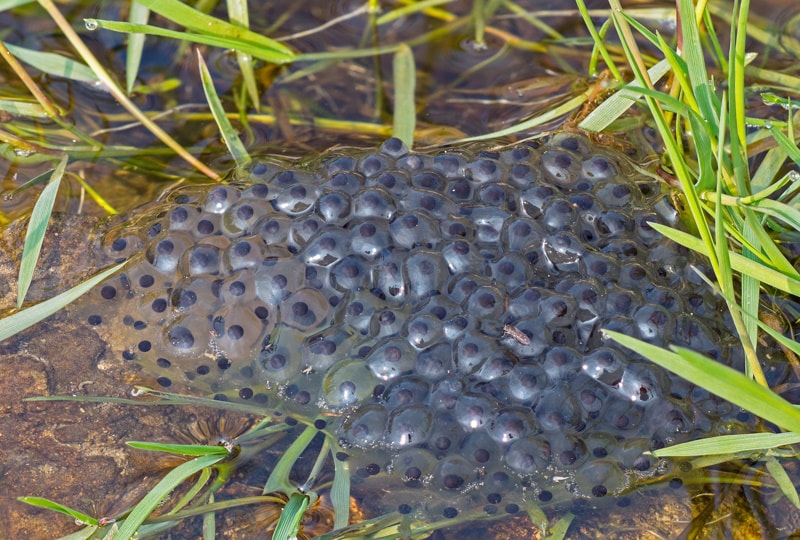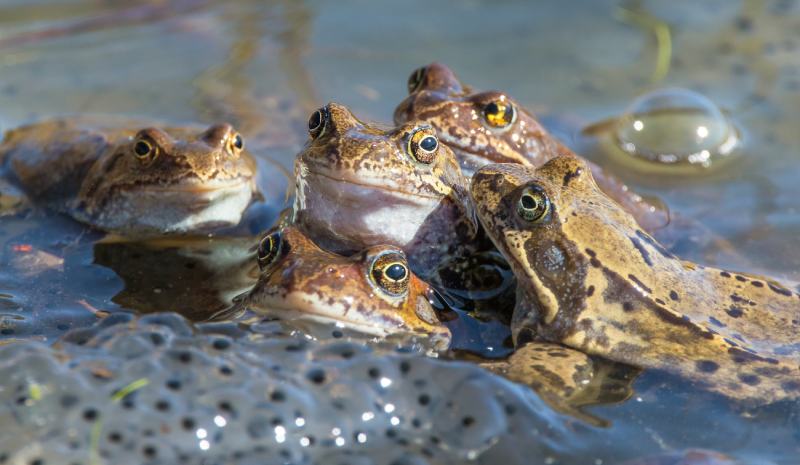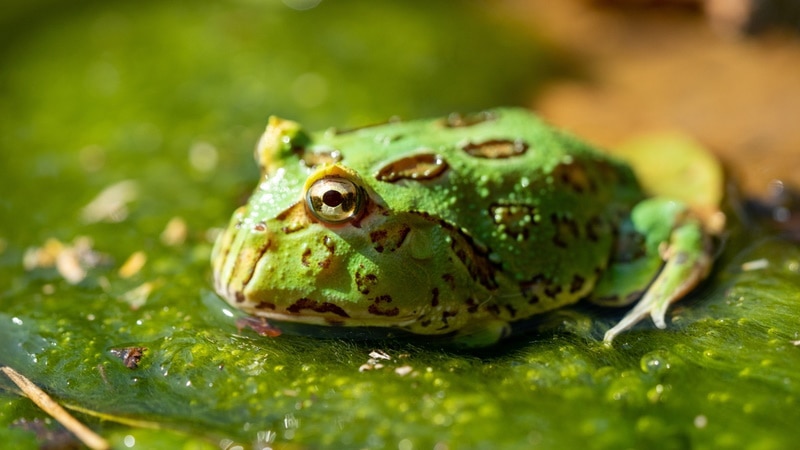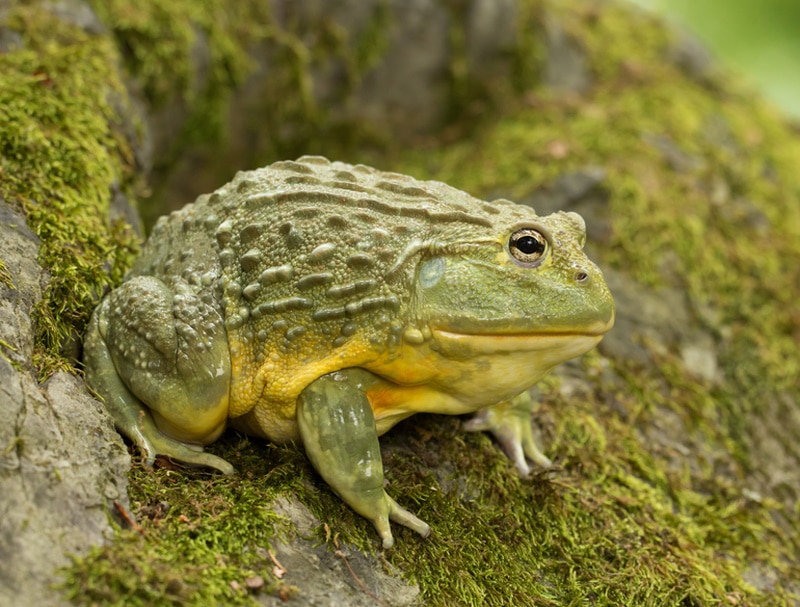How Many Eggs Do Frogs Lay? What the Science Tells Us
By Dr. Luqman Javed, DVM (Vet)
Updated on

Frogs are common amphibians that can be found all over the world. From large and iconic bullfrogs to tiny tree frogs and poisonous varieties, there are dozens of different types of frogs to discover and learn about. One interesting question to ask is how many eggs frogs can lay. Do they lay a handful of eggs like birds, or do they lay large clutches like fish? Since frogs are amphibians, this question is curious, and the answer is not apparent.
Frogs lay a very large and variable number of eggs. Frogs can lay anywhere from a couple of hundred to a few thousand eggs during a breeding cycle. The exact number of eggs a frog can lay depends on a variety of factors, such as the species and the environmental conditions. Here is how many eggs frogs can lay, including concrete examples to explore.
The High End
Certain frogs can lay thousands of eggs in one clutch. On the highest end of the spectrum, some frogs, such as the Pig Frog (Rana [Lithobates] grylio) and the American Bullfrog (L. catesbeianus), have been found to lay up to 20,000 eggs at one time. Other common frogs, such as the Common Mexican Tree Frog (Smilisca baudinii), can lay 3,000 eggs at one time. That means that certain areas with high frog populations can be home to hundreds of thousands, if not millions, of eggs during the breeding season. That is a lot of frog eggs! But not all frogs lay thousands of eggs at once. Other frogs lay a more modest number of eggs per clutch.

The Low End
On the lower end of the spectrum, frogs will lay between 100 and 1,000 eggs at one time. Some frogs lay even fewer than that. For example, one type of Mexican frog, Sarcohyla thorectes, lays 10 to 14 eggs at a time on the leaves of ferns that overhang nearby water. Other frogs, like the Florida Bog Frog (Lithobates okaloosae), lay between 150 and 300 eggs in a single clutch.
That means that the range of eggs that a frog can lay stretches from 10 to 10,000, which is an incredible spread. A number of factors determine the exact number of eggs a single frog will lay at any given time, including the species, the environmental conditions, and the anatomy of the individual eggs.
Major Factors
Species
The single greatest determining factor in the number of eggs a particular frog lays is the species. Some species simply lay far more eggs than others. An American Bullfrog might lay considerably fewer eggs than the 10,000 it is capable of, but the Florida Bog Frog will never lay 10,000 eggs because its species simply is not equipped to do so. If you are curious about how many eggs a particular species of frog can lay, consult a reputable source on the subject and search for each one individually. There are over 6,000 individual species of frogs in the world!
Health Status
The health status of the female will determine how many eggs she can lay in a breeding cycle. Likewise, the health status of a male will determine how many eggs he can successfully fertilize. Healthy frogs with no health issues have better reproductive success than injured, unwell, or malnourished frogs.
Environment
Another factor that can determine how many eggs a frog lays in a clutch is the environment. Things like the average temperature, the amount of water nearby, and the presence of predators can determine the ultimate size of a clutch. For example, a particularly hot dry season could leave marshy areas devoid of the water needed to lay large clutches.
Frogs will lay the maximum number of eggs only if the environmental factors are just right, and frogs have no control over this aspect of their lives. That means that frogs need the perfect temperature, the correct amount of water, and ambient humidity to produce the conditions that are just right for egg laying.

Frog Egg Anatomy
The last factor that determines how many eggs a frog lays is connected to the frog eggs’ anatomy itself. Some frogs lay eggs that must be submerged in water. Other frogs lay eggs on the ground. Some frogs lay eggs that have no protection from things like predators, sunlight, and heat. Frogs that lay eggs in water that have very few protections tend to lay more eggs than frogs that produce eggs that are a little more durable.
How Many Frog Eggs Survive?
One of the reasons that frogs lay so many eggs is that very few of them survive. Many eggs are destroyed in a number of ways, including environmental factors (sunlight, rain, lack of water, etc.) and predators that eat the eggs. Some estimates claim that only 1 in 50 eggs survive. That means that frogs on the lower end (150 to 300 eggs) might only see 3 to 6 of their eggs mature to adulthood. That is a very small margin of success which is why frogs lay a ton of eggs at once to increase the chances of having some of their offspring reach maturity. Even frogs that have their eggs hatch and develop into tadpoles have no guarantee that the tadpoles won’t also meet an unfortunate end. Such is life out in nature.
Still, it is noteworthy that the plethora of frog eggs plays a vital role in maintaining the balance of the ecosystems that they live in, as many other animals rely on frog eggs as a food source.
Frog Species Clutch Size Examples
As discussed, frogs can lay a variable number of eggs. Each species has its own lower and upper limit for the size of the clutches. These frogs represent some common frogs that can be found around the world, with an approximation of how many eggs each frog can lay at one time. Note that these frogs represent the average, which ranges roughly from 2,000 to 7,000 eggs per clutch.
| Frog Name | Frog Species | Eggs Per Clutch |
| American Bullfrog | L. catesbeianus | 5,000–20,000 |
| African Bullfrog | Pyxicephalus adspersus | 3,000–4,000 |
| Common Mexican Tree Frog | Smilisca baudinii | 2,000–3,000 |
| Pig Frog | Rana grylio | 7,000–10,000 |
| Common Marsh Frog | Pelophylax ridibundus | 1,000–10,000 |
Conclusion
Frogs are amazing animals, and they can lay a ton of eggs. The most proficient egg layers can spawn clutches that number in the thousands and occasionally even the tens of thousands. Heavily populated marshes, streams, rivers, and bogs can play host to hundreds of thousands of frog eggs at any given time. Every frog species is unique, and each individual frog can lay a different number of eggs.
Featured Image Credit: Mojpe, Pixabay










